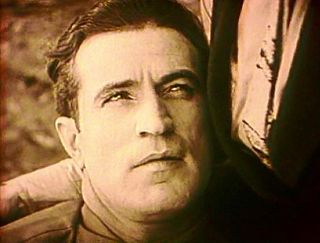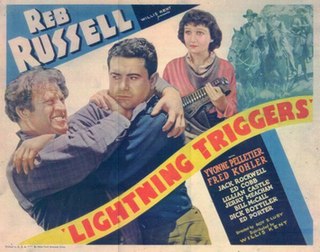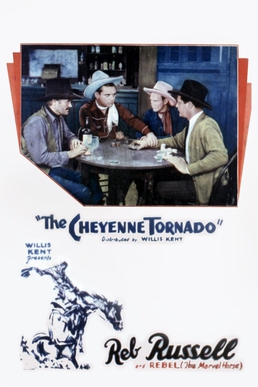
Ford Beebe was a screenwriter and director. He entered the film business as a writer around 1916 and over the next 60 years wrote and/or directed almost 200 films.

Battling with Buffalo Bill is a 1931 American pre-Code Western serial film directed by Ray Taylor and starring Tom Tyler, Lucile Browne, William Desmond, Rex Bell, and Francis Ford.

Richard Theodore Adams was an American film actor who appeared in nearly 200 films between 1926 and 1952.

Ben Corbett was an American film actor. He appeared in more than 280 films between 1915 and 1956. He was born in Hudson, Illinois and died in Hollywood, California.

Al Ferguson was an Irish-born American film actor.

The Utah Kid is a 1930 American pre-Code Western film directed by Richard Thorpe and starring Rex Lease and Boris Karloff.

Harry Russell Hopton was an American film actor and director.

Bob Custer was an American film actor who appeared in over 50 films, mostly Westerns, between 1924 and 1937, including The Fighting Hombre, Arizona Days, The Last Roundup, The Oklahoma Kid, Law of the Rio Grande, The Law of the Wild and Ambush Valley.

Return of the Bad Men, also known as Return of the Badmen, is a 1948 American Western film directed by Ray Enright and starring Randolph Scott, Robert Ryan and Anne Jeffreys. A loose sequel to the 1946 film Badman's Territory, it was followed by Best of the Badmen (1951). Written by the husband-and-wife team of Jack Natteford and Luci Ward, the film was shot at the RKO Encino Ranch. It was the final collaboration between Enright and Scott and Jeffreys' final picture for RKO.
Olin Caldwell Francis was an American actor.
Wild West Romance is a 1928 American silent Western film directed by R.L. Hough, and written by Jack Cunningham and Delos Sutherland. The film stars Rex Bell, Caryl Lincoln, Neil Neely, Billy Butts, Jack Walters, and Fred Parker. The film was released on June 10, 1928, by Fox Film Corporation.

Guns for Hire is a 1932 American Western film directed by Lewis D. Collins and starring Lane Chandler, Sally Darling and Neal Hart.

The Man from Hell is a 1934 American Western film directed by Lewis D. Collins and starring Reb Russell, Fred Kohler and George 'Gabby' Hayes.

Arizona Bad Man is a 1935 American Western film directed by S. Roy Luby and starring Reb Russell, Lois January and Edmund Cobb.

Lightning Triggers is a 1935 American Western film directed by S. Roy Luby and starring Reb Russell, Yvonne Pelletier and Fred Kohler.

Outlaw Rule is a 1935 American Western film directed by S. Roy Luby and starring Reb Russell, Betty Mack and Al Bridge.

Fighting Through is a 1934 American Western film directed by Harry L. Fraser and starring Reb Russell, Lucille Lund and Yakima Canutt.

The Cheyenne Tornado is a 1935 American Western film directed by William A. O'Connor and starring Reb Russell, Victoria Vinton and Roger Williams.
James Diamond (1894–1936) was an American cinematographer active during the silent and early sound eras. Much of his work during the 1930s was for lower-budget Poverty Row companies.
Joseph O'Donnell (1891–1963) was an American screenwriter. He worked for a variety of studios on Poverty Row during the 1930s, mainly on westerns.
















